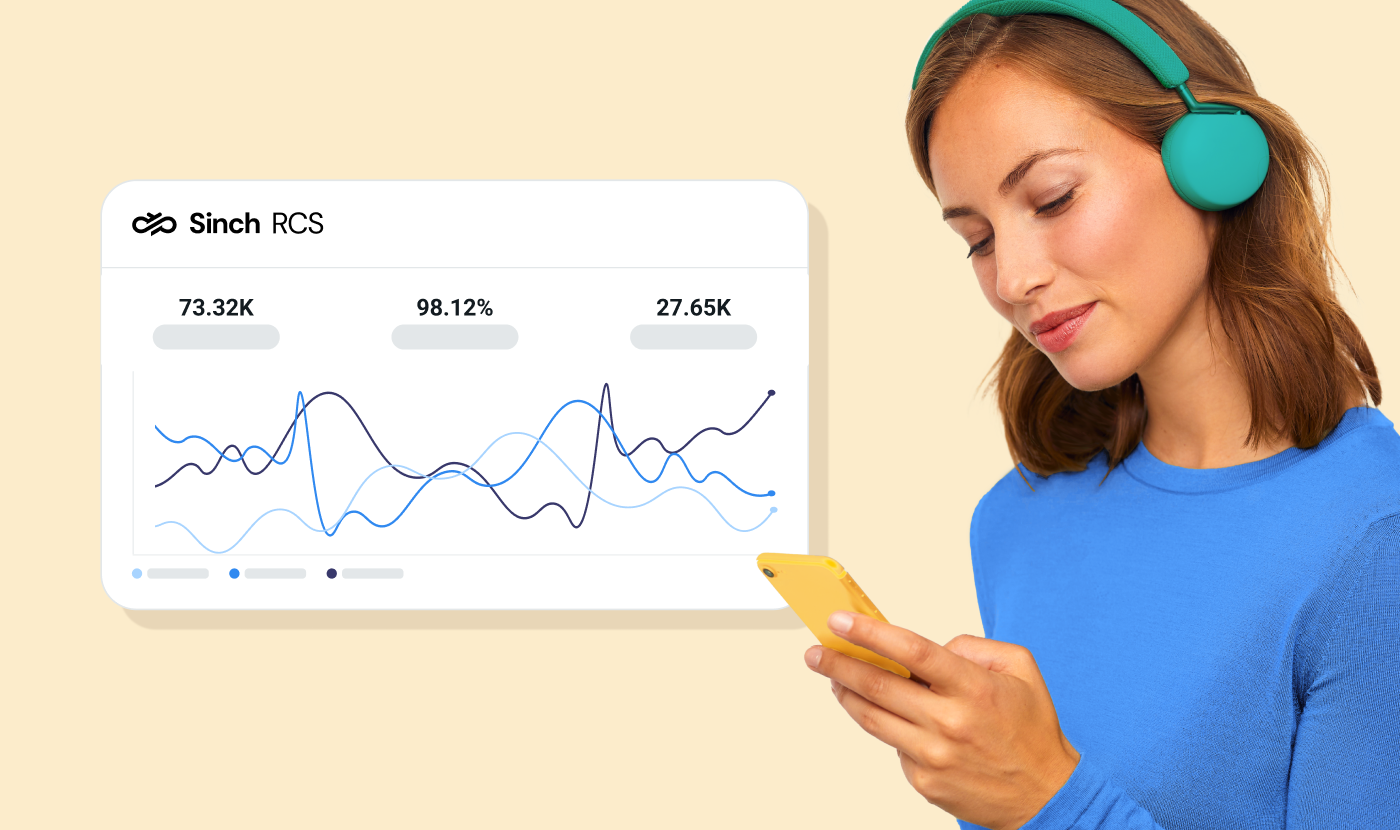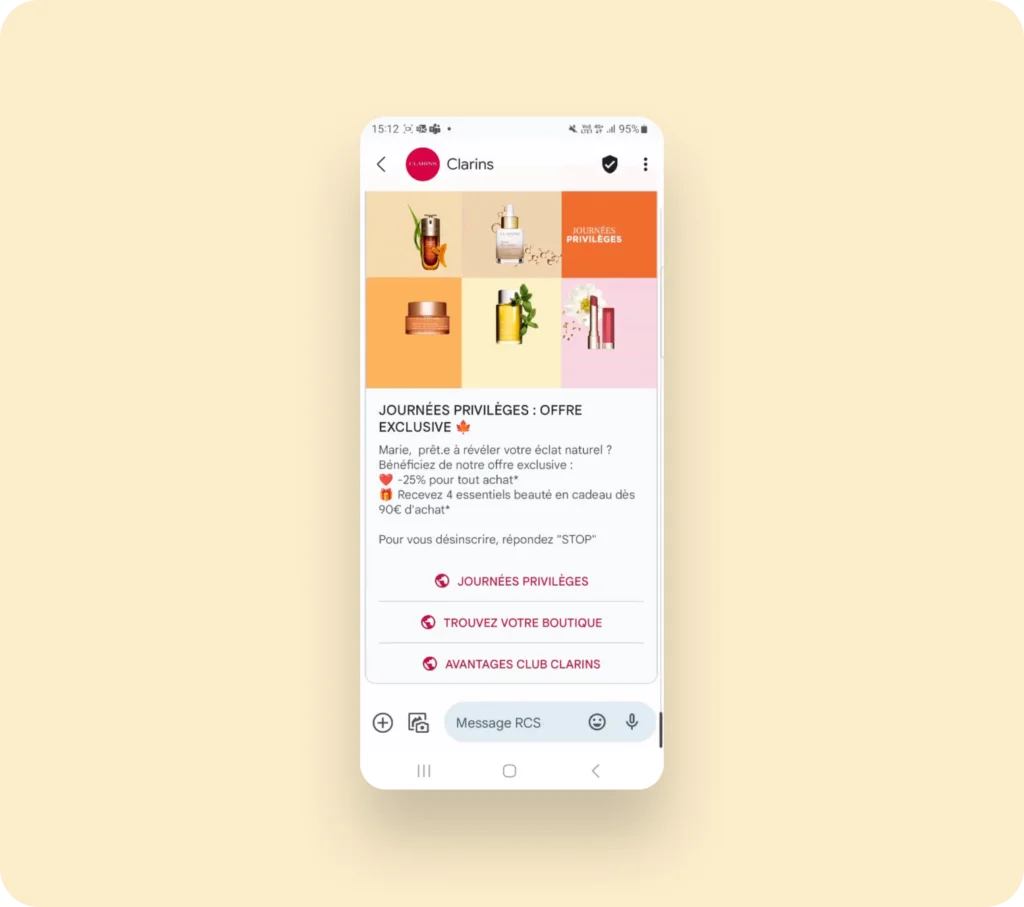Insights
RCS benchmarks and success stories every marketer should know

Insights

Marketers are under more pressure than ever. Campaigns need to land fast, feel personal, and drive measurable ROI – all while an audience scrolls by in seconds.
Inboxes are overloaded. Ads are easy to ignore. And even SMS can fall short when you’re trying to truly connect with your customers.
That’s why more brands are turning to Rich Communications Services (RCS), a messaging protocol that brings branded, app-like experiences directly into a user’s default messaging app. This means branded visuals, interactive buttons, carousels, videos, and more – all within a native mobile channel customers regularly use.
More and more brands are using RCS to stand out and are seeing measurable results. But when it comes to tracking an RCS marketing campaign, what does “good” actually look like? And how do you know if you’re hitting the right benchmarks?
Let’s dive into the data – and the real-world stories – that show what’s possible when RCS is done right.
With over one and a half billion active users and growing support from Apple, RCS is quickly becoming one of the dynamic messaging channels in business communication today.
And the momentum isn’t just hype. In our 2024 BFCM Communications Survey, 51.2% of consumers said they’re likely to engage with interactive mobile messages like RCS. That tells us that richer messaging experiences are what consumers expect.
Lodema Steinbach, VP of Product & Carrier Relations, breaks down why RCS can be such a gamechanger for businesses.
And what can marketers stand to gain from RCS? Here’s what they’re paying attention to:
In short: RCS combines the reach of SMS with the interactivity of an app, all delivered natively to the messaging inbox your customers use every day.
RCS isn’t new or experimental as a business messaging channel – it’s nearly two decades in the making, and is now optimized for today’s mobile-first marketing strategies. And because of that, there’s now enough real-world data to establish reliable benchmarks for marketing teams.
Here’s what RCS performance typically looks like:
These numbers consistently outperform other channels, and that’s part of the reason marketers are so excited about RCS. And the best part? They’re backed by real outcomes. We’ll look at that next.
Seeing is believing, right? Let’s take a look at how leading brands have used RCS to drive impressive results.
Picard, a beloved French retail brand, used RCS to send promotional holiday offers. They let customers choose holiday menu options with a rich, conversational experience that felt tailored just for them. And it worked!
This aligns with the 79.8% of consumers in our 2024 BFCM Communications Survey who said personalized recommendations impact their decisions. Turns out, giving people what they want in an interactive format gets results!
Micromania-Zing, the gaming retailer, took their holiday marketing to the next level by using suggested replies to guide shoppers in their shopping journeys. And it had great results:
It’s a powerful example of how simplifying the customer journey can drive real, measurable results.
One of Europe’s leading skincare brand, Clarins, used RCS for seasonal promotions, pairing a branded profile with engaging visuals and clear CTAs.

Even better? Those numbers were significantly higher than the same campaign sent via Rich SMS. RCS clearly made Clarins’ seasonal campaigns more compelling.
BUT, a big-name home retail brand, used RCS to re-energize rebate offers that had traditionally diminishing returns with Rich SMS. The returns of RCS speak for themselves:
By using RCS as a bridge to other messaging channels, BUT turned a single campaign into long-term engagement.
The best RCS campaigns combine interactivity, personalization, and timing. Here are some smart, high-impact ways to use RCS today:
RCS is a great messaging channel for marketing, but you’ll still need to keep best practices in mind. These tips will help you drive strong performance.
And – perhaps most importantly – test and learn! RCS is new territory for many marketers, so testing and iterating will help you understand what good looks like for your organization and audience.
Apple’s support for RCS in iOS 18 marks a massive shift in messaging, and marketers have an opportunity to lead the charge rather than play catch up.
Our 2024 Customer Connections survey found that 77.9% of consumers now prefer to hear from brands through multiple channels, with messaging apps on par with email and social platforms in perceived value. We expect that preference will only grow in 2025, as consumer expectations for richer, more interactive messaging continues to grow.
Enterprise brands are already proving that RCS delivers real engagement. And with richer messaging becoming the new standard, now’s the time to start building RCS into your customer journeys.
The best part? You don’t need to overhaul your current systems to get started with RCS – it can work right alongside SMS, email, and other messaging channels, making it easy to plug into your existing marketing strategy.
Curious to see what RCS can do for your brand? Connect with the Sinch team to start building smarter, more engaging messaging journeys today.